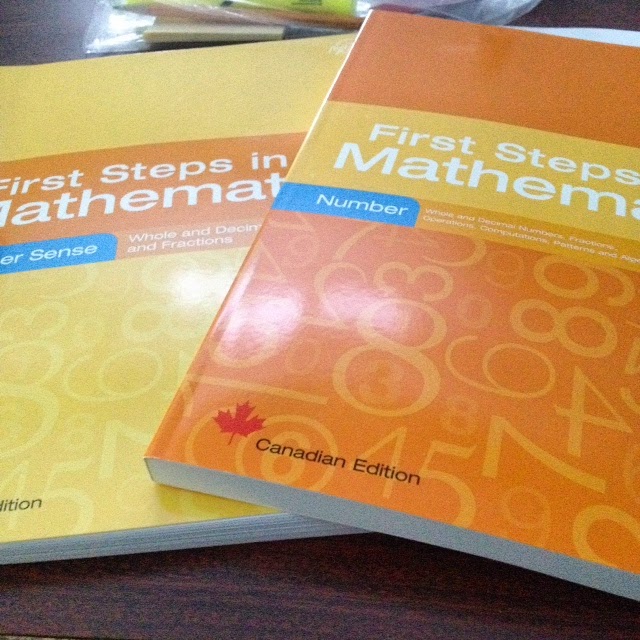First Steps in Math – Day 1

Today I began the First Steps in Math program with four other educators from our division. Several years ago our division sent one of our colleagues to the First Steps in Math training program and he has now spent time each year educating other teachers in our division and was actually trained by David McKillop, who I saw last year in Brandon.
 |
| My new books (provided by our division): the First Steps in Math Number Sense course book & work book. |
First Steps in Math was developed in Australia in the early 1990’s as a means to identify the conceptual phases that all students go through and analyze how best to address any gaps that may occur in their understanding. In their own words, First Steps in Math helps teachers:
– build or extent their own knowledge of the mathematics underpinning
the curriculum
– understand how students learn mathematics so that they can make sound
professional decisions
– plan learning experiences that are likely to develop the mathematics
outcomes for all students
– recognize opportunities for incidental teaching during conversations and
routines that occur in the classroom
Our first full-day session, of four, focused on the background research behind the program and how the program is organized. We spent the majority of the morning discussing these introductory topics and then looked at two chapters to see how the program looks in practice. It is important to note that we are only focusing on the Number curricula for right now, but the program offers the same resources for Measurement, Geometry, Space, Data Management, and Probability.
In regards to Number, this resource centers on two main areas: the individual concept development and how it ties into a continuum of understanding. The program identifies eight Key Understandings for this topic and allots an entire chapter to each one. This chapter includes:
– a concise explanation of the key understanding
– a series of learning activities organized by grade level (K-8)
– a case study
– a “did you know” article that discusses possible misconceptions
Personally I like the way the chapters are set up as they are to-the-point and easy to follow; I can see myself being able to easily pull out information as needed without having to re-read full chapters. The program also includes a section of Diagnostic Tests that help showcase a student’s understanding and pin-point possible learning activities to help strengthen weak concepts.
My only experience teaching math is in Grades 8-10 so I found it very interesting to see how the foundational numeracy skills are developed in younger grades. While I have several students I can think of that are struggling with some misconceptions I already feel more prepared in appropriately assessing their area of difficulty and recognize that their challenge most likely stems directly from a foundational concept as opposed to a higher-order topic.